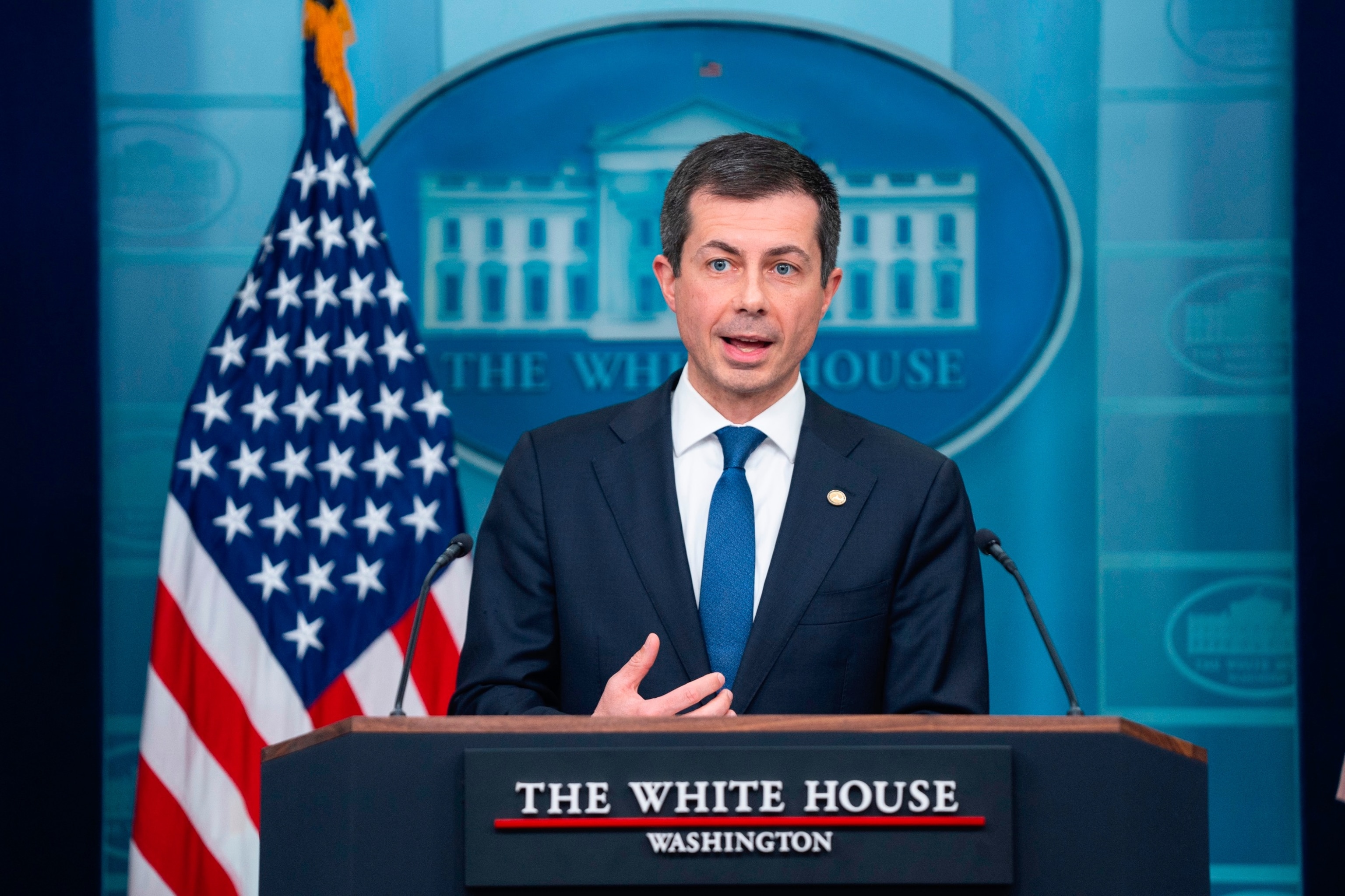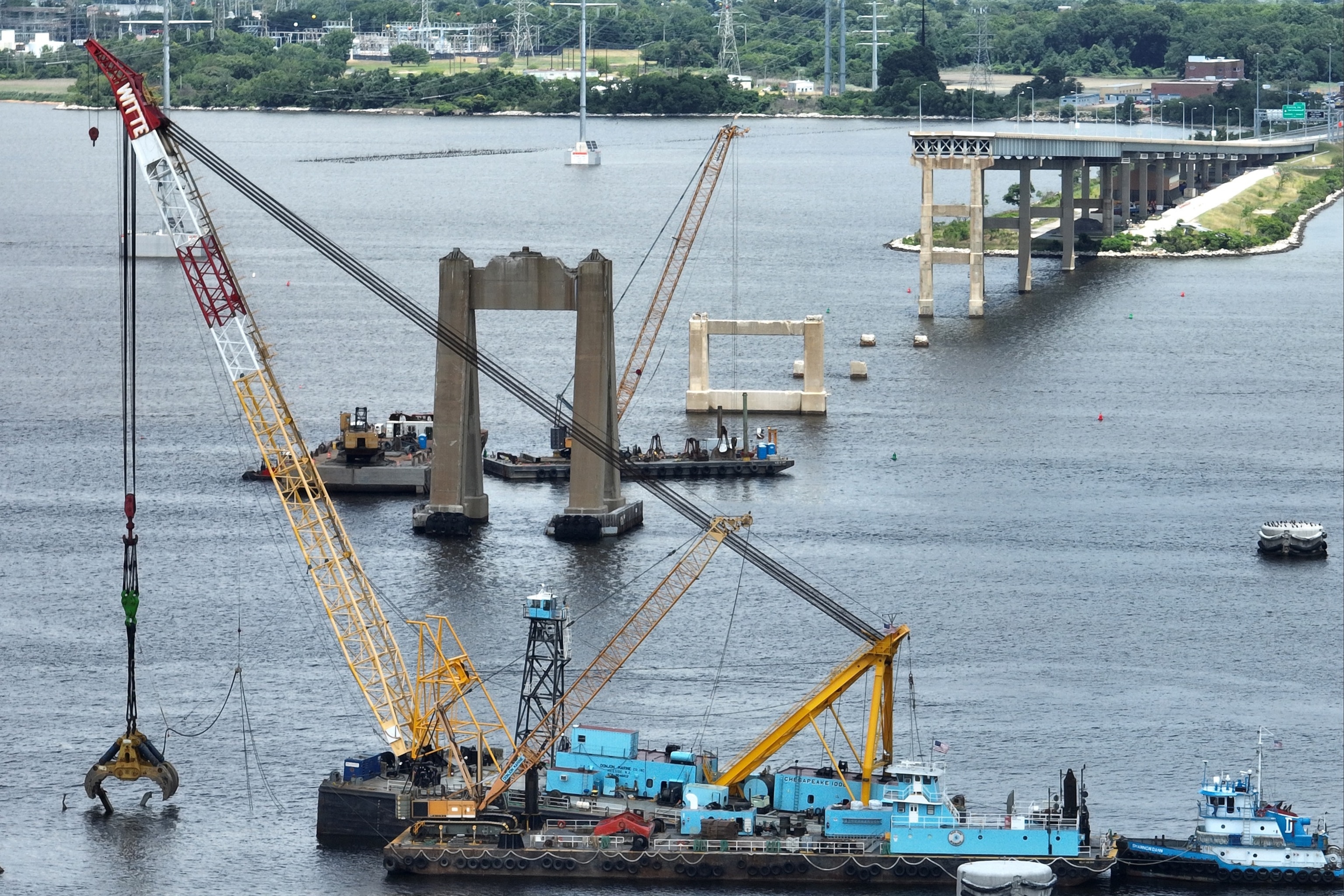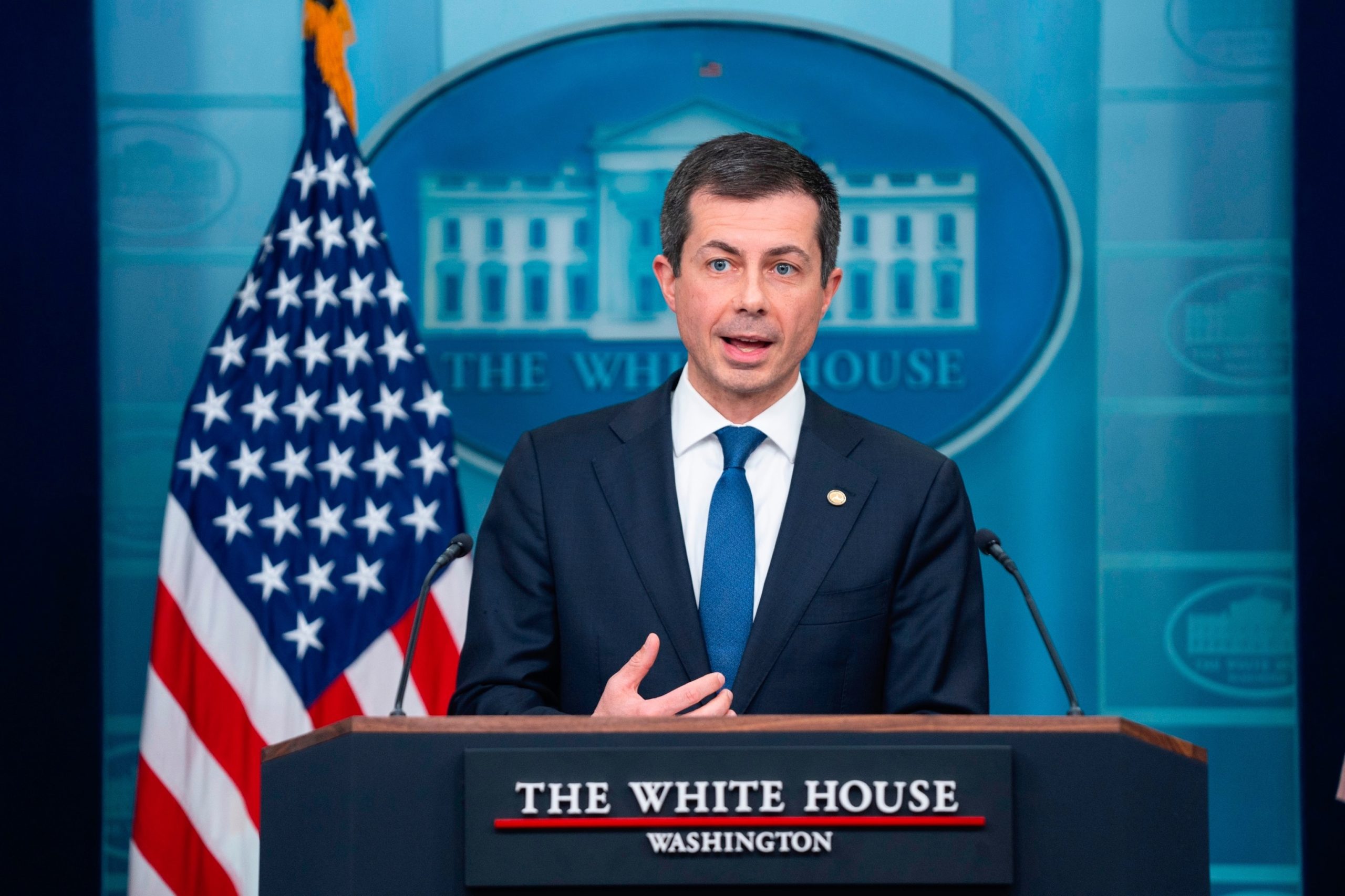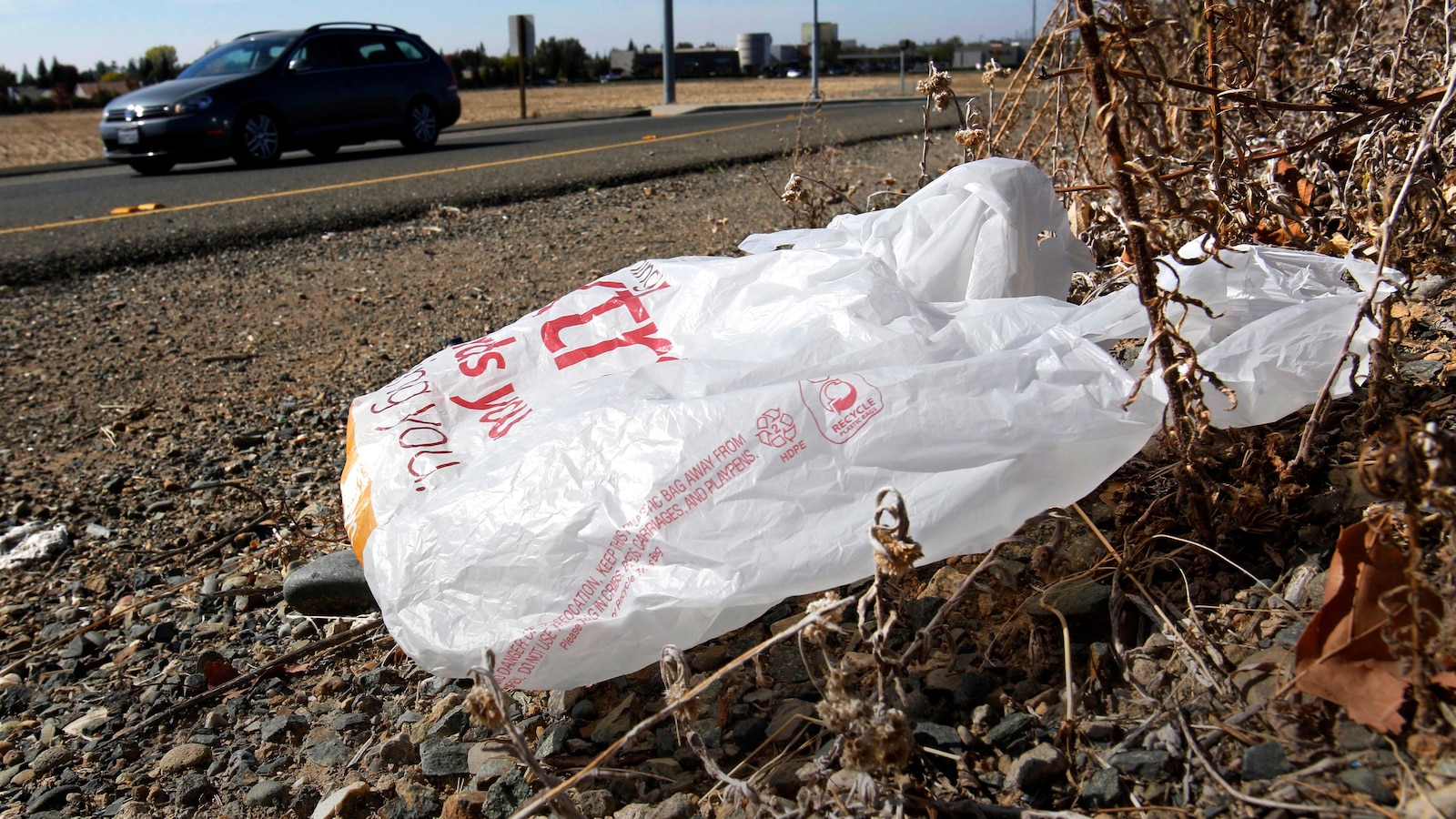The Port of Baltimore’s federal channel was safely reopened to its original dimensions of 700 feet wide by 500 feet deep without any major injuries, The White House said.
Work continues to remove debris outside of the McHenry Federal Channel, and a safety zone will be maintained to protect workers. Deep draft vessels will be required to have a single escort tug until the work is complete.
The preliminary costs to rebuild the bridge as quoted by the Department of Transportation are between $1.7 billion and $1.9 billion, officials said.

Transportation Secretary Pete Buttigieg speaks during a press briefing at the White House, March 27, 2024, in Washington.
Evan Vucci/AP
A 984-foot-long cargo ship, the Dali, struck the Key Bridge on March 26, triggering a collapse that killed six workers and affected entry into the port. The ship was refloated and moved from the crash site on May 20.
Around 50,000 tons of steel were cleared, equivalent to 3,800 fully loaded dump trucks, according to Major General Butch Graham of the U.S. Army Corps of Engineers.
Graham credited crane operators, divers, mariners, and salvage workers for their efforts, stating they have been working below, underneath, and on the Patapsco River since March 30.
According to Secretary Pete Buttigieg, traffic redirected to other ports earlier should now be able to pass through.
“Our belief and expectation is that all of those disruptions and adaptations, as important as they were, were temporary and that traffic that would have been going to Baltimore the day before this happened, belongs in Baltimore today,” the secretary said.

In an aerial view, salvage crews continue to clean up wreckage from the collapse of the Francis Scott Key Bridge in the Patapsco River on June 11, 2024 in Baltimore, Maryland.
Kevin Dietsch/Getty Images
He added, “We have every indication that that is what is taking place, but we’ll be reinforcing that expectation as we speak with players up and down the supply chains, including a conversation that we plan to have later this week.”
Buttigieg said the port opening’s major impact would be on local workers, especially the International Longshoremen’s Association workers, as they were not working with ships not arriving at the Port of Baltimore.
“We felt enormous urgency about making sure that we did everything we could to get back to normal there,” he said. “And now those workers can count on that business returning. It’s been a gradual process, and some of them have been working for some time. Now we can say that it is fully back to normal.”
Buttigieg reiterated President Joe Biden’s intention to secure federal funding for rebuilding the bridge and added that the Maryland delegation is leading a process in Congress to make that happen.
After being closed for several months due to structural issues, the Baltimore Shipping Channel has finally reopened. The closure of this vital waterway had significant impacts on the local economy, as it is a key route for shipping goods in and out of the city.
The closure was necessary to address safety concerns related to the Howard Street Tunnel, which runs underneath the channel. The tunnel is over 120 years old and was in need of extensive repairs to ensure the safety of both the shipping channel above and the trains that pass through it.
The reopening of the Baltimore Shipping Channel is a welcome development for businesses and residents in the area. However, the cost of repairing and rebuilding the Howard Street Tunnel is estimated to be around $1.7 billion. This hefty price tag has raised concerns about how the project will be funded and whether it will be completed in a timely manner.
The Howard Street Tunnel is a critical piece of infrastructure for the city of Baltimore, as it connects the Port of Baltimore to the rest of the country via rail. Without this tunnel, goods would have to be transported by truck, which would be more costly and less efficient.
The reopening of the Baltimore Shipping Channel is a positive step forward, but there is still much work to be done to ensure the long-term viability of this important transportation route. The city and state will need to work together to secure funding for the necessary repairs and upgrades to the Howard Street Tunnel.
In the meantime, businesses that rely on the Baltimore Shipping Channel will need to adjust their operations to account for the ongoing construction and potential delays. It is important for all stakeholders to work together to find solutions that minimize disruptions and keep goods flowing smoothly through this vital waterway.
Overall, the reopening of the Baltimore Shipping Channel is a positive development for the city and its economy. However, the estimated $1.7 billion needed to rebuild the Howard Street Tunnel is a significant hurdle that will need to be overcome in order to ensure the long-term success of this key transportation route.



